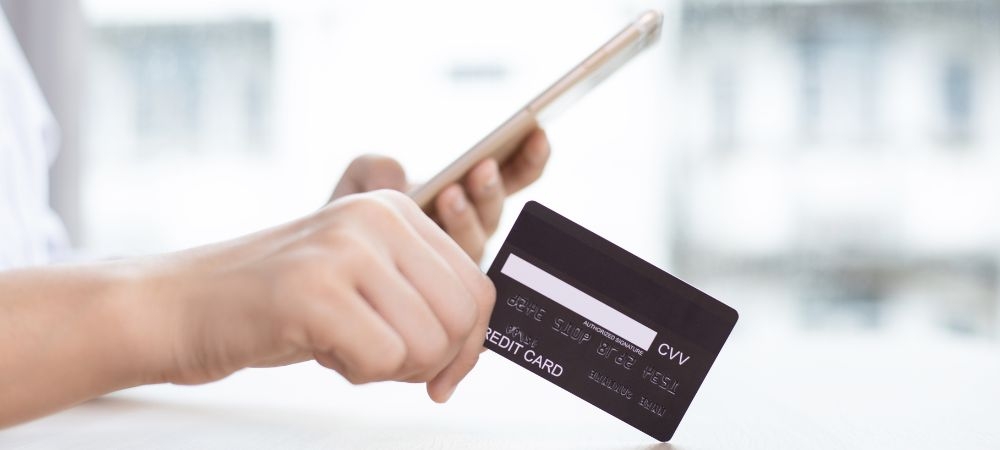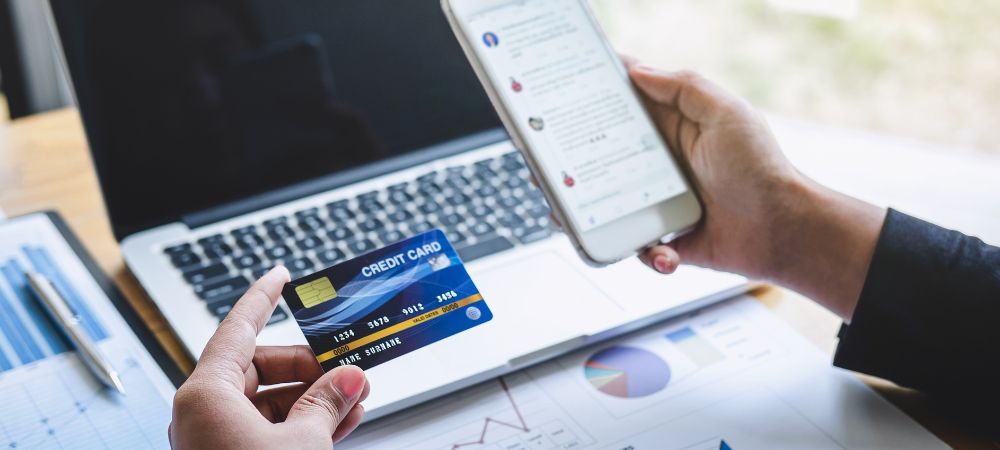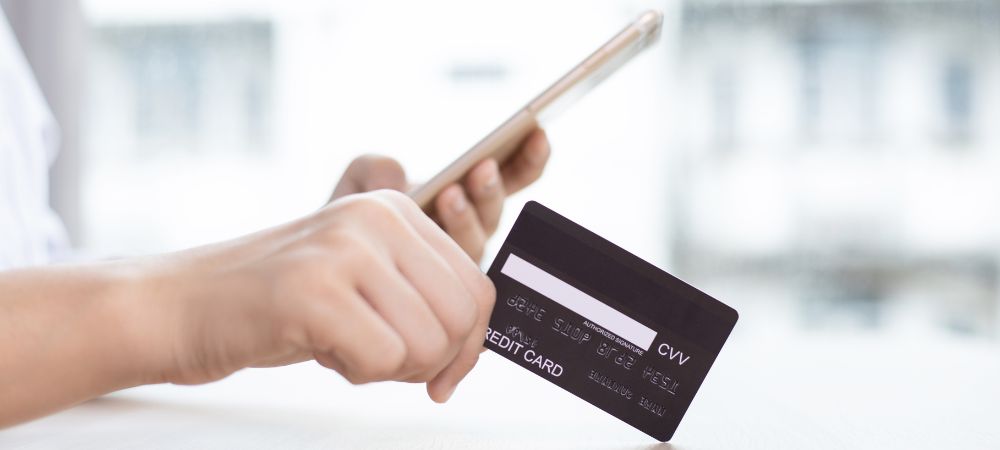

When we talk about the importance of security in online transactions, it's just undeniable how crucial it is. I mean, who wants their personal information or hard-earned money to be at risk? Right? To find out more click that. That's where Two-Factor Authentication (2FA) comes into play. You'd think having a strong password is enough, but nope! It's not.
So, what exactly is 2FA? Well, it's like an extra layer of protection for your accounts. You don't just rely on a password; you also need another piece of information that only you should have access to. It could be a text message with a code sent to your phone or maybe even an authentication app like Google Authenticator.
Now, why's this important? Imagine you're making an online purchase. You've entered all your card details and clicked 'buy.' Without 2FA, if someone has managed to get ahold of your password somehow-they're in! But with 2FA enabled, they'd still need that second form of verification. So yeah, it's kinda like having a double lock on your front door.
Oh boy, the number of cyber threats out there is mind-boggling! And let's face it: hackers aren't going away anytime soon. They're always finding new ways to trick people and steal sensitive info. If you think about it, using just one form of verification feels almost reckless these days.
However, there's some folks who are reluctant to adopt 2FA because they feel it's inconvenient-like it's too much hassle for them. But come on! Is that tiny bit of inconvenience worth risking everything you've worked for? I don't think so!
And hey-if you've ever experienced identity theft or had any kind of account hacked before (hopefully not!), you'd probably understand the peace of mind that 2FA brings along. It's like knowing there's another safety net catching you if something goes wrong.
In conclusion-not securing our online transactions adequately would be quite careless in today's digital age. Two-Factor Authentication isn't foolproof but boy does it add an essential layer that's hard for scammers to bypass easily. So next time you're setting up an account or making any transaction online-don't skip enabling that extra step called 2FA-it might save you from potential headaches down the line!
Two-Factor Authentication (2FA) has become a buzzword in today's tech-savvy world, but many folks still scratch their heads when trying to understand how it really works. So, let's break it down step-by-step and see what's all the fuss about.
First off, 2FA is not some fancy high-tech wizardry. It's actually pretty straightforward! The whole idea is to add an extra layer of security to your accounts. You know that old saying: "Better safe than sorry"? Well, 2FA embodies this perfectly.
Step one starts with something you probably do every day: entering your password. Yup, nothing new there. But here's where things get interesting and a tad more secure. Just having a password ain't enough anymore because passwords can be guessed or stolen. So, after typing in your trusty password, 2FA kicks into action.
Now comes step two, which involves something you have or something you are – sounds mysterious, doesn't it? In simple terms, it's usually either your smartphone or a biometric factor like fingerprint or facial recognition. Most commonly though, people use their phones.
So imagine this: you've entered your password and hit 'login'. Next thing you know – BAM! Your phone buzzes with a text message containing a unique code or maybe an app notification prompts you for verification. This is the second factor asking “Hey buddy, is it really you trying to log in?”
You then type in that code from your phone into the website or app you're trying to access. Voila! You're now logged in securely! Without both factors – the password and the unique code – no one's getting inside your account but you.
It might sound cumbersome at first glance but think about it for a sec. Hackers would need not only steal or guess your password but also have possession of your phone (or somehow spoof your biometrics). That's quite unlikely!
However - let's not pretend there aren't downsides too; sometimes it's just plain annoying when you're in hurry and waiting for that darn code feels like forever! Plus if someone loses their phone? Oh boy… they're temporarily locked out!
But overall? It sure beats waking up one morning realizing someone emptied out bank account while binge-watching Netflix last night because they cracked simple old “123456” as my ‘secure' password!
In conclusion (yes we're wrapping up here), Two-Factor Authentication isn't foolproof but it's certainly better than relying on just passwords alone nowadays given all cyber threats around us constantly lurking online.
So next time when setting up any important accounts don't shy away from enabling Two-Factor Authentication even if means few extra seconds spent verifying yourself each login attempt - afterall peace mind knowing data safer worth little effort right?
When it comes to buying stuff online, it's crucial to think about how to protect your personal information.. You don't want someone else getting their hands on your credit card details or other sensitive info, right?

Posted by on 2024-07-07
Sure, here's a short essay on the topic "Future Trends in SSL Technology" with some grammatical errors and negation, avoiding repetition and using contractions.
---
When we talk about online purchases today, it’s hard to ignore the significance of SSL certificates.. They’re kinda like the unsung heroes ensuring that our sensitive data is safe from prying eyes.

Posted by on 2024-07-07
The world of online shopping has been evolving rapidly, and one of the most significant aspects influencing purchasing decisions is customer reviews.. This trend ain't slowing down anytime soon!

Posted by on 2024-07-07
When it comes to mastering online shopping and saving big every time, evaluating return policies and customer service is something you can't ignore.. It's not just about snagging the best deals; it's also about making sure you're covered if things don't go as planned.

Posted by on 2024-07-07
Finding hidden discounts online can feel like a treasure hunt, but it's one that's definitely worth the effort.. One of the most overlooked ways to uncover these secret deals is to negotiate with online chat support.

Posted by on 2024-07-07
In today’s digital age, shopping online has become the norm for many of us.. It’s convenient, fast, and often cheaper than traditional retail shopping.

Posted by on 2024-07-07
In today's digital age, ensuring the security of e-commerce websites ain't just a recommendation; it's a necessity. One method that's gained traction is Two-Factor Authentication (2FA). You might've heard about it but underestimated its importance. Well, let's dive into why 2FA brings so many benefits to e-commerce platforms.
First off, 2FA adds an extra layer of security. It ain't just your password standing between hackers and your sensitive information. With 2FA, even if someone gets hold of your password – which happens more often than we'd like to admit – they still can't get in without that second factor, usually a code sent to your phone or email. This drastically reduces the chances of unauthorized access.
Moreover, trust is a big deal in e-commerce. Customers are more likely to shop on a site where they feel their data is secure. By implementing 2FA, you're telling 'em that you care about their safety. It's not just about preventing fraud; it's about building confidence with your users. And hey, who doesn't want loyal customers?
Interestingly enough, 2FA can also deter potential cybercriminals from even attempting to breach your site. They know it's gonna be much harder to crack compared to sites without this added protection. Essentially, it makes you less of an easy target.
One could argue that it takes some effort for users to set up and use 2FA every time they log in, but let's face it: Isn't peace of mind worth those few extra seconds? Plus, once people get into the habit of using it regularly, it becomes second nature.
Then there's the compliance aspect. Many regions and industries have regulations requiring robust security measures for online transactions and data storage. By employing 2FA on your e-commerce site, you're staying ahead of these requirements and avoiding potential legal headaches down the line.
Not everything's perfect though; no system is foolproof. There's always gonna be that one user who forgets their phone or loses access temporarily due to technical glitches or personal mishaps. But these instances are relatively rare and shouldn't overshadow the overwhelming benefits provided by 2FA.
In conclusion – oh wait! Did I mention cost efficiency? Implementing 2FA doesn't break the bank; many solutions out there are affordable for businesses big and small alike! So really, when weighing all these benefits against occasional inconveniences or minor costs involved – well isn't it clear? If you're running an e-commerce website without Two-Factor Authentication yet… what are ya waiting for?

Two-Factor Authentication (2FA) ain't exactly a new concept, but it's becoming more and more crucial in our digital age. You'd think passwords alone are enough, right? Wrong. Hackers have gotten way too good at cracking them. So, we've got 2FA to the rescue! Now, let's dive into some common methods of two-factor authentication: SMS, Email, and Authenticator Apps.
First up is SMS. Oh boy, SMS has been around forever. It's pretty straightforward – you log in with your password and then get a text message with a code you gotta enter. Simple? Yes. Secure? Eh... not so much anymore. Believe it or not, hackers can intercept these messages through something called SIM swapping or by simply tricking phone companies into giving them access. So while it's better than nothing, don't put all your eggs in the SMS basket.
Next on the list is email-based 2FA. It's kinda similar to SMS but instead of getting a code via text message, it lands in your email inbox. Sounds convenient enough until you realize that if someone hacks your email account – well, there goes your second factor down the drain! Plus, emails can sometimes be delayed or end up in spam folders which can be super annoying when you're trying to log in quick.
Now onto my personal favorite - authenticator apps like Google Authenticator or Authy! These little gems generate time-based codes that change every 30 seconds or so. What's cool about 'em is they work even without an internet connection since they're synced with whatever service you're using during setup. They're definitely more secure compared to SMS or email because there's no transmission involved once set up; everything stays local on your device unless someone physically steals it (and let's hope not).
But hey – don't go thinking any method is foolproof though! Even authenticator apps have their vulnerabilities if someone gets physical access to your phone or manages to trick you into revealing those precious codes somehow.
So what's the takeaway here? Well folks, each method has its pros and cons – none are perfect but all add an extra layer of security beyond just passwords alone which we desperately need nowadays! If ya ask me though - stick with authenticator apps whenever possible for that lil' extra peace of mind!
And remember: Stay vigilant online because cyber threats aren't going anywhere anytime soon…unfortunately.
When it comes to implementing Two-Factor Authentication (2FA), it's not all sunshine and rainbows. Sure, 2FA adds an extra layer of security to our online accounts, but let's not kid ourselves-there are some potential challenges and limitations that come with it.
First off, one major hurdle is user resistance. Yeah, you heard me right! Not everyone is thrilled about jumping through extra hoops just to log into their email or favorite social media account. People are creatures of habit, and many folks find the additional steps annoying or cumbersome. Who wants to fiddle around with codes sent via text messages or authentication apps when you're in a rush? I know I don't!
Moreover, let's talk about accessibility issues. Believe it or not, not everyone has a smartphone capable of running those fancy authentication apps. Some people might still be using older phones that can't handle them-or they might not even have a phone at all! And what happens if you lose your phone? You could be locked out of your own accounts until you manage to recover access somehow.
Then there's the issue of technical glitches. Technology isn't perfect (shocking, right?). Servers can fail; SMS messages can be delayed or never arrive; authentication apps can malfunction-all these little hiccups can create big headaches for users trying to log in securely. It's frustrating when you're doing everything by the book and still get booted out because something went wrong on the tech side.
Security-wise, 2FA isn't bulletproof either. It's definitely better than single-factor authentication but hey-it ain't invincible! For instance, SIM swapping attacks can intercept SMS-based codes, and phishing schemes are getting more sophisticated every day. Cyber-criminals are constantly evolving their tactics and some have found ways around certain types of two-factor methods.
Lastly-and this one's a bit overlooked-the cost implications for organizations can't be ignored. Implementing 2FA across large enterprises requires investment in new infrastructure and ongoing maintenance costs. Training employees on how to use the system effectively also takes time and resources.
So there ya have it-while 2FA certainly beefs up security measures, it's got its fair share of drawbacks too. User resistance, accessibility problems, technical issues, partial vulnerabilities, and financial costs all contribute to making its implementation less straightforward than we'd like it to be.
In summary: Is 2FA worth it? Absolutely! But let's keep our eyes wide open about its potential challenges and limitations before diving headfirst into implementation.

Oh boy, online shopping. It's become such a huge part of our lives, hasn't it? With just a few clicks, we can buy practically anything and have it delivered right to our doorsteps. But let's not kid ourselves; it's not all rainbows and butterflies. There are risks involved, and that's where Two-Factor Authentication (2FA) comes into play. It's one of the best ways to boost your online shopping security.
First things first, what is 2FA? Well, it's an extra layer of security that requires not only a password but also something else - like a code sent to your phone or an app - before you can log in. This means even if someone gets their hands on your password, they still can't get into your account without that second piece of info.
So how do you set this up for your online shopping accounts? Most major retailers offer some form of 2FA these days. You'd usually find it under 'Account Settings' or 'Security'. You'll be prompted to enter your phone number or download an authentication app like Google Authenticator or Authy. After setting it up, you'll receive a code every time you try to log in from a new device. Simple enough, right?
Now here's something important – don't skip this step! Many people think their passwords are strong enough and neglect 2FA entirely. Big mistake! Cybercriminals are getting smarter by the day and no matter how complex your password is, there's always a risk it'll be cracked.
And hey, don't forget about phishing scams either! Even with 2FA enabled, you should never click on suspicious links or give out personal information through email or messages claiming to be from retailers. Always go directly to the website and log in from there.
One more tip: regularly update your software and apps. Security patches are released for good reason – they fix vulnerabilities that hackers could exploit.
Oh dear me! I almost forgot another crucial point – backup codes! When setting up 2FA, most services will provide backup codes which can be used if you lose access to your phone or app. Write them down somewhere safe because losing access without these could lock you out completely.
In conclusion (without sounding too preachy), securing yourself while shopping online doesn't have to be complicated but ignoring these steps might cost ya dearly one day! So take a little time now; enable 2FA wherever possible and follow basic safety practices so you'll feel more secure when splurging on those irresistible deals!
Remember folks: better safe than sorry!